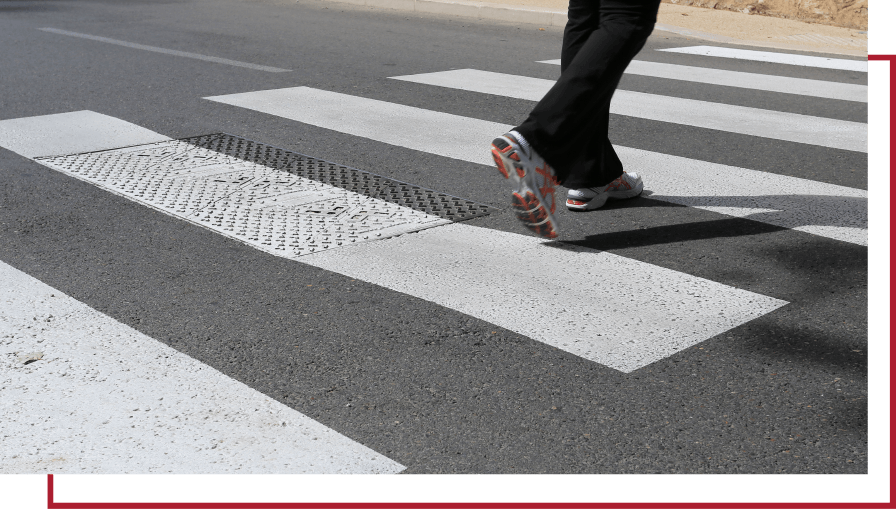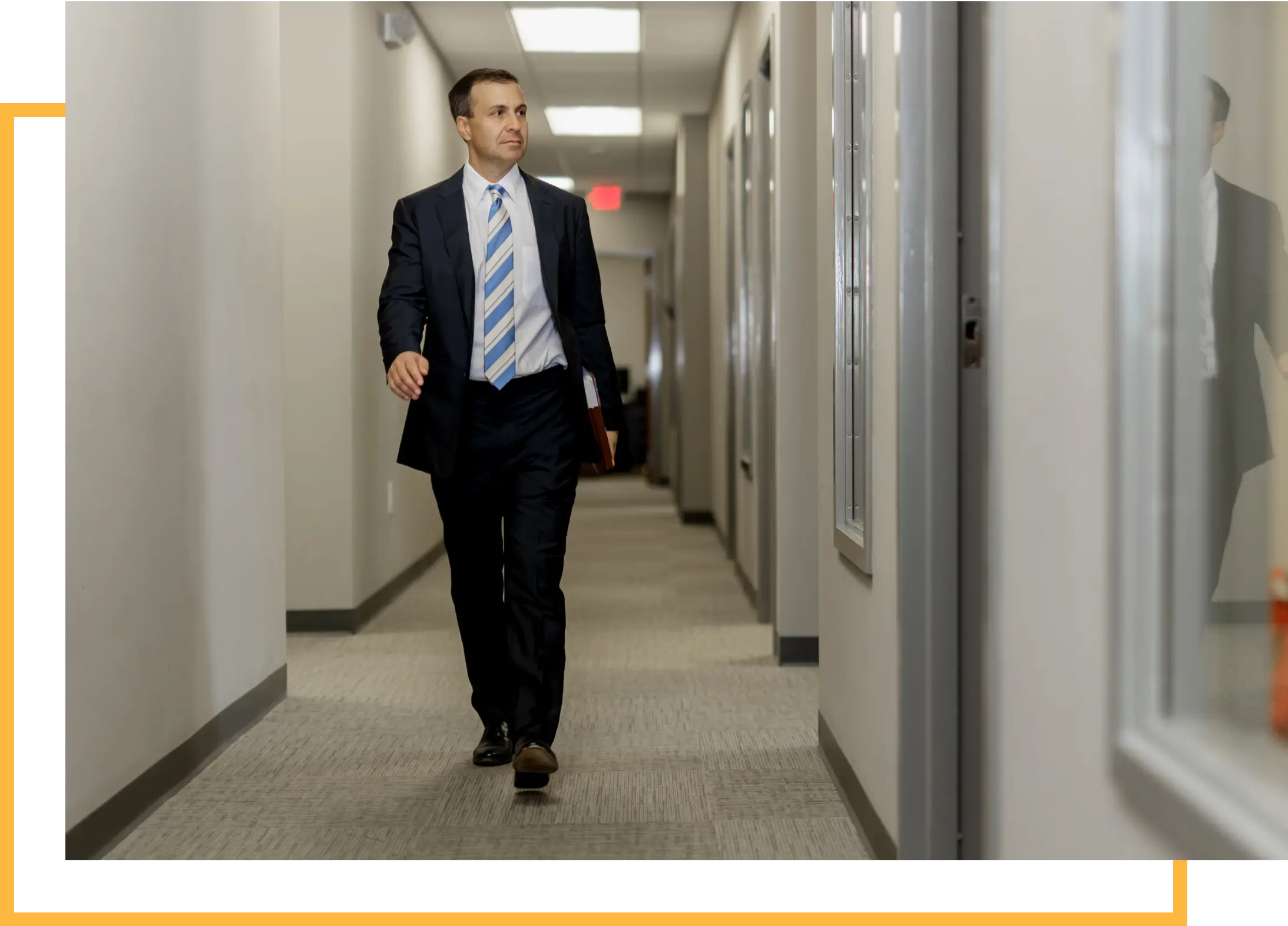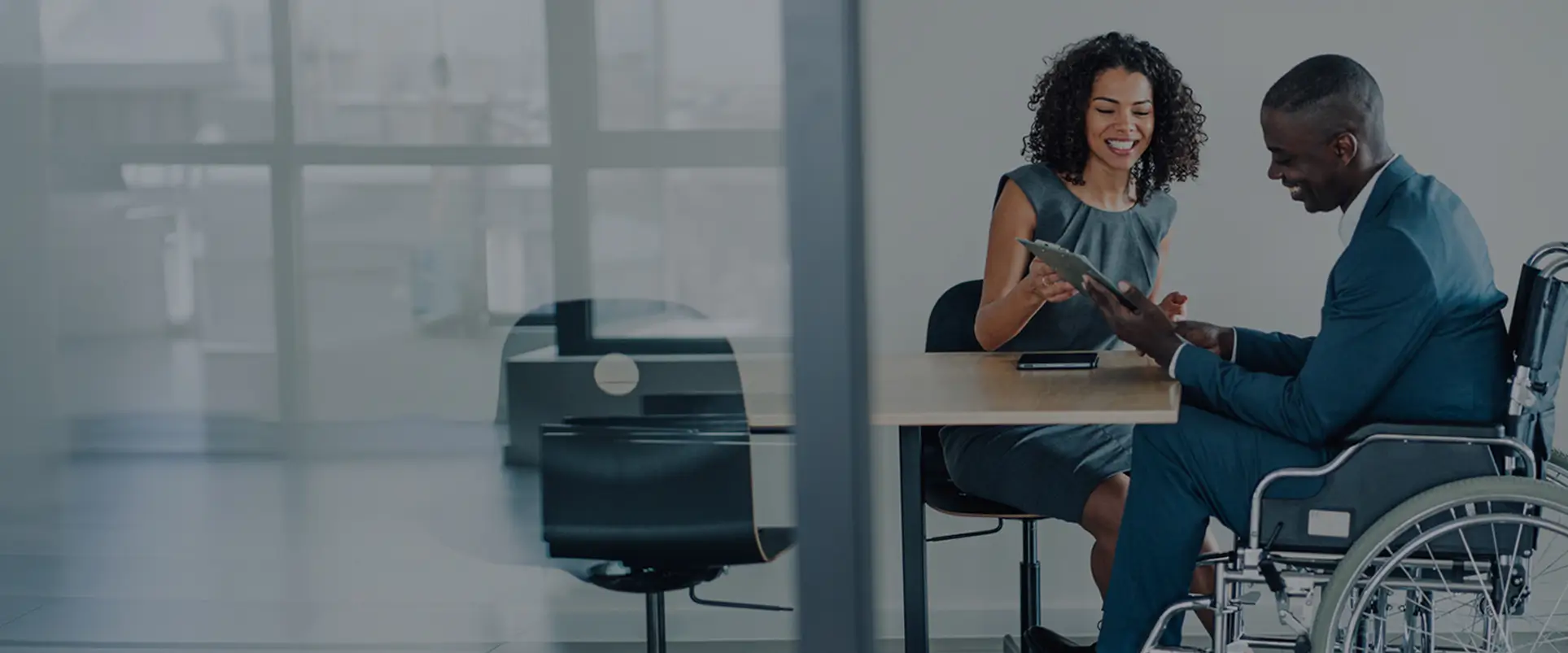
We are in it together

Injured In A Pedestrian Accident? We Can Help.
Pedestrian accidents are a growing problem. Many metropolitan areas lack the safety measures to properly protect pedestrians from careless drivers. When a pedestrian is struck by a motor vehicle, the consequences are often tragic.
If you or a loved one have been injured by a negligent driver, the Ricci Law Firm can help. Our pedestrian accident lawyers in North Carolina will fight to secure the compensation you deserve.
Navigating the Complexities of Nursing Home Abuse
We represent clients in pedestrian accident cases caused by negligent drivers, unsafe road conditions, or other hazards. Our team works to secure compensation for medical expenses, lost wages, and the long-term impact of catastrophic injuries.
Additionally, we pursue third-party claims for additional compensation and guide clients through the legal process, ensuring they receive the financial support needed for recovery and future stability.
How Common Are Pedestrian Accidents in North Carolina?

Why Are the Financial Stakes Higher in Pedestrian Accident Claims?
- Severe Injuries: Pedestrians face catastrophic injuries due to their lack of protection in accidents.
- Dual Impacts: Victims endure the initial car strike and the secondary impact with the ground.
- Speed Factor: The risk of severe injury or death rises significantly as vehicle speed increases.
- High Costs: Catastrophic injuries result in millions in lifetime medical and lost income expenses.
- Larger Vehicles: SUVs and trucks increase the severity of injuries and fatalities in accidents.
North Carolina is one of the most dangerous states in the nation for pedestrians. More than 3,000 pedestrians are hit by drivers every year. According to a report released by the North Carolina Department of Transportation (NCDOT), pedestrian deaths have increased by 5.2% in the last reporting year.
In an effort to better understand the dangerous trend, an in-depth study of North Carolina’s famous Triangle was recently conducted. The data shows:
- More than half of all pedestrian accidents happen near bus stops
- A third of pedestrian collisions occur in parking lots
- 25% of pedestrians are hit at intersections and driveways
On average, nearly 160 pedestrians die on North Carolina roadways each year. When a pedestrian is hit by a motor vehicle going 40 mph, there is an 85% chance they will die from their injuries. In most pedestrian accidents, the person is catastrophically wounded.
What Injuries Are Typically Associated with Pedestrian Accidents?
Pedestrian accidents often result in catastrophic injuries, including brain damage, spinal cord injuries, and crush syndrome. Traumatic brain injuries can cause lasting issues such as memory loss, cognitive impairment, and personality changes. Spinal cord injuries may lead to paralysis, while broken bones and fractures can cause complications like infections or prolonged recovery times.
Crush injuries, common in pedestrian accidents, can damage internal organs and extremities. Severe cases may result in crush syndrome, toxic shock, or amputation to prevent further harm. These injuries require extensive medical care and rehabilitation.
What Are the Most Common Causes of Pedestrian Accidents?
Most pedestrian accidents can be traced back to driver error. More and more people are choosing to walk, especially in metropolitan areas. As the sidewalks and streets become more congested, the pressure for drivers to watch for pedestrians steadily increases.
Distracted Driving
Distracted driving has plagued North Carolina roads for years. As technology has evolved, cell phones and GPS navigational units have been added to the list of driver distractions.
According to the National Safety Council, in the last reporting year, more than 3,000 fatalities were attributed to distracted driving. When a motorist takes their focus off the road for any reason, it is considered distracted driving. Some examples include:
- Talking or texting on a cell phone
- Checking texts or other notifications on a mobile phone
- Adjusting the vehicle controls, including the temperature or radio
- Using a GPS device
- Grooming, including applying makeup, shaving, or brushing your hair
- Eating and drinking
- Using social media
- Engaging in conversation with passengers
- Zoning out or driver inattention
- Handling children or family pets in the back seat
When a driver is distracted, they may not see a pedestrian in the crosswalk and fail to stop or reduce speed. Pedestrians can suffer debilitating and life-threatening injuries.
Speeding and Reckless Driving
Speeding is one of the leading causes of car accidents. When a motorist chooses to go over the speed limit, they willingly put everyone’s life in danger. Speeding reduces the time a driver has to react, especially if a person suddenly comes into the road. In addition, speeding significantly increases a pedestrian’s risk of death.
Failing to Yield the Right of Way
Pedestrians have the right-of-way in many different scenarios. For example, a pedestrian has the right of way at a crosswalk. However, many accidents occur at intersections when a car is turning left and fails to yield at a pedestrian crossing the street.
Left-hand turns tend to be more dangerous. Drivers must look where they are going and account for two lanes of traffic. In many cases, a driver may not see a pedestrian begin to cross before starting left. Additionally, the driver may be looking at other lanes of traffic to make sure they are clear and forget to check the crosswalk.
Disobeying Traffic Laws
Motorists are expected to follow the rules and regulations of the road. Failing to obey signs and traffic signals can lead to serious and deadly collisions. In fact, according to a recent study, only 20.2% of drivers fully stop at a stop sign. Instead, most drivers merely slow down and look before crossing.
Unfortunately, pedestrians are not easy to see. Motorists are trained to look for other cars when driving. However, drivers must actively watch for pedestrians. When a driver rolls through a stop sign and fails to see the pedestrian crossing the intersection, the results can be devastating.
Driving Under The Influence Of Drugs Or Alcohol
Impaired driving accidents are easily prevented. Driving drunk is a reckless act that costs thousands of lives every year. Driving under the influence reduces reaction times, impairs vision and judgment, decreases coordination, and jeopardizes the ability of the driver to maintain control of their vehicle.
Of the 7,000 pedestrians killed in the last reporting year, alcohol was involved in nearly half of the accidents. An estimated 13% of deaths involved a driver with a blood alcohol level above the legal limit.
Is the Driver Always At Fault in a Pedestrian Accident?
Drivers are not automatically at fault in a pedestrian accident. While more responsibility is placed on a motorist to prevent hitting anyone, pedestrians can bear some responsibility.
North Carolina is a comparative negligence state, meaning drivers and pedestrians can share fault. In terms of a pedestrian accident claim, a settlement may be reduced to reflect their share of the responsibility.
What is Comparative Negligence?
The legal doctrine of comparative negligence examines the details of an accident and determines if both parties contributed to the outcome. Then, blame is allocated as a percentage.
For example, suppose a driver was speeding and hit a jaywalking pedestrian. The driver is liable for speeding and hitting the pedestrian. The pedestrian is liable for failing to use the crosswalk. Under comparative negligence, the driver may be found to be 80% at fault for the collision, and the pedestrian found to be 20% at fault.
The injured pedestrian is still entitled to recover damages. However, their compensation will be reduced by their percentage of fault. In this scenario, if a judge awards the pedestrian a $100,000 settlement, it will be reduced by 20%. The injured pedestrian is entitled to $80,000 of their settlement.
When Can a Pedestrian Share Liability for Their Injuries?
Pedestrians may be found partially to blame in some instances. For example, a pedestrian may be liable if they:
- Fail to use the crosswalk
- Fail to yield the right-of-way
- Enter a crosswalk against the lights
- Walk in the road when there is an available sidewalk
If you have been injured in a pedestrian accident, it is imperative fault is allocated fairly. An attorney can investigate and gather critical evidence to support your claim.
When is a Driver Liable in a Pedestrian Accident?
Most pedestrian accidents are caused by driver error. Pedestrians bear a disproportionate amount of bodily damage in a collision compared to drivers. Therefore, motorists are held to a higher standard. Drivers should always look out for pedestrians, regardless if they use a crosswalk appropriately.
Drivers are typically liable in a pedestrian accident when:
- Failing to yield the right-of-way at an intersection
- Running a red light or a stop sign
- Veering off the road
To ensure fault is allocated fairly, have an experienced pedestrian accident lawyer evaluate the details of your case.
What Types of Compensation Can Our Pedestrian Accident Attorneys Recover?
Our pedestrian accident lawyers will work tirelessly to secure the compensation you deserve. While every accident is unique, we will examine the details of your case and determine all the damages you are entitled to recover.
Compensation For Medical Expenses
When a pedestrian suffers major injuries, they often need extensive medical help. Pedestrian accident victims may need to stay several days or weeks in a hospital. In addition, they may need multiple surgeries and ongoing treatment. An injury attorney can help you secure a settlement that will cover your medical expenses.
Lost Wages If You Are Unable To Work
During recovery, many accident victims find themselves unable to work for an extended period of time. Without any income, hurt pedestrians may be depending on their settlement to catch up on bills. Accident victims may be entitled to recover any wages missed while healing from their injuries.
Loss Of Future Earned Income Potential
When a pedestrian’s injuries are debilitating, they may not be able to return to the workforce at the same capacity as they were before the accident. For example, suppose a pedestrian suffered a severe spinal cord injury that results in paralysis. The victim may not be able to perform the same daily tasks as they did before. The loss of future earned income potential seeks to replace the income a person would have earned had they not been injured.
Pain and Suffering Damages
Serious injuries, treatments, and recovery is often a long and painful process. Pain and suffering damages seek to quantify that pain. The monetary value is based on the physical pain experienced at the time of the accident and the additional suffering thereafter.
Emotional Distress Damages
Emotional distress damages refer to the mental anguish suffered by the accident victim. When a pedestrian is struck by a vehicle, it may be the most traumatic experience in their life. It is common for accident victims to experience increased anxiety and sleeplessness.
However, emotional distress damages are only awarded when there is a specific diagnosis of mental anguish. For example, post-traumatic stress disorder (PTSD) is one of the most common ailments. Injury victims are also diagnosed with clinical depression and anxiety disorders frequently after a serious pedestrian accident.
Possible Punitive Damages
Punitive damages seek to punish a grossly negligent driver. Unlike the above damages, punitive damages are not based on the injuries suffered by the victim. Instead, punitive damages are derived from the extent of wrongdoing by the negligent party.
Pedestrian Accident FAQs
Pedestrian accident claims can be complex, with numerous legal challenges that may feel overwhelming, especially while recovering from serious injuries and dealing with the aftermath of the incident.
To assist you, we’ve compiled answers to some of the most common questions our clients have about pedestrian accident cases in North Carolina. Read on to understand your rights and explore your options for securing compensation.

If you have a teenage driver, it is important to teach them about the many dangers that come with operating a motor vehicle. From drinking and driving to texting and driving, there are many habits ...
Getting into an accident with another driver is bad enough, but what if you get into an accident with a drunk driver? The injuries could be worse on both sides, and it’s a more dangerous acci...
There are a lot of distractions on the road today. As drivers, we have anything from our phones beside us to accidents on the road nearby. We don’t want to get into an accident ourselves beca...

Schedule a Consultation with a Pedestrian Accident Lawyer in North Carolina Today
Pedestrian accidents are seldom straightforward. If you or a loved one have been hit by a negligent driver, the esteemed attorneys of the Ricci Law Firm can help. We have extensive experience recovering the full compensation our clients deserve.
Call to schedule a free consultation with a North Carolina pedestrian accident lawyer today. We will discuss the details of your case and determine the best course of action for the results you need.


